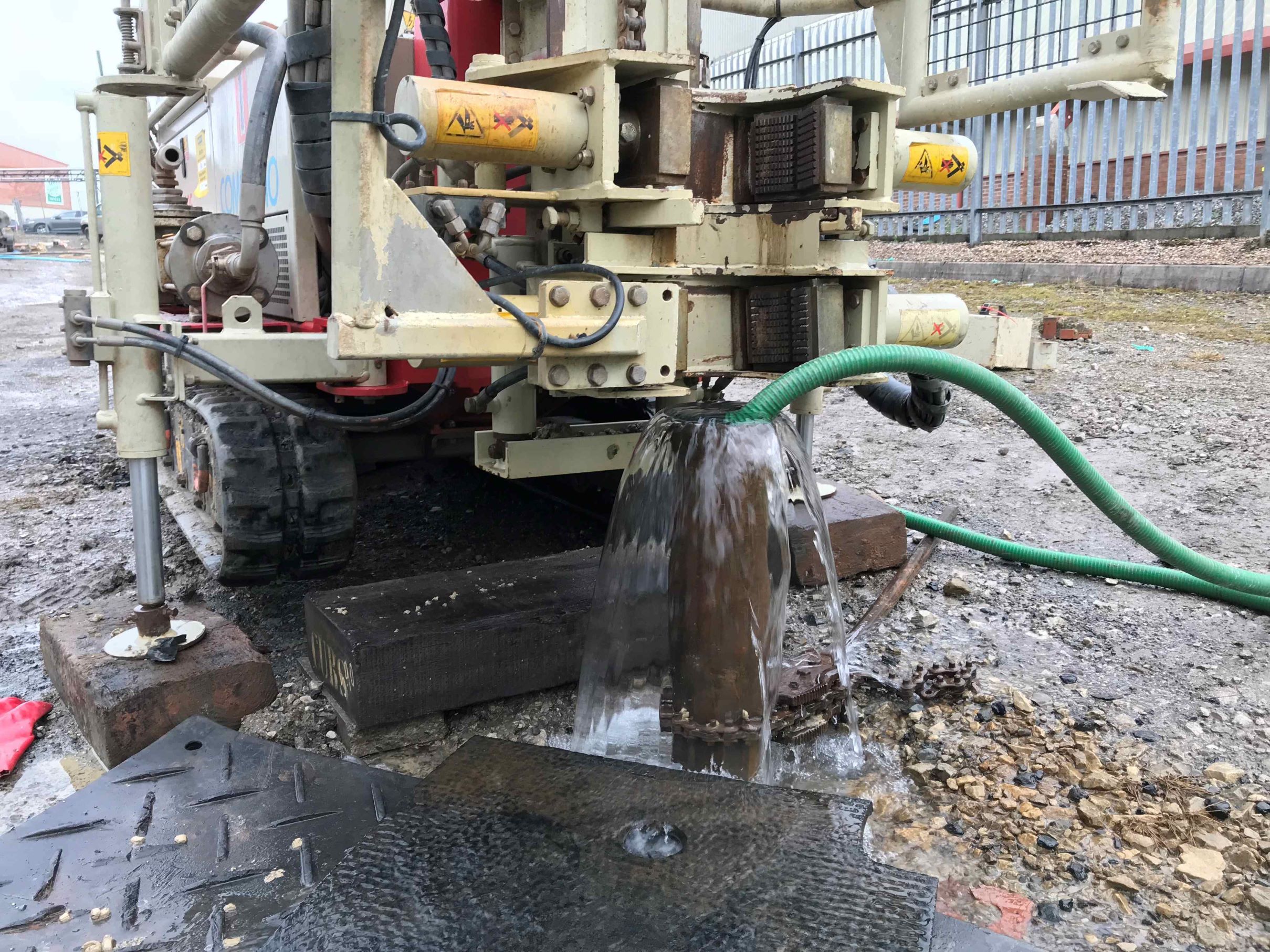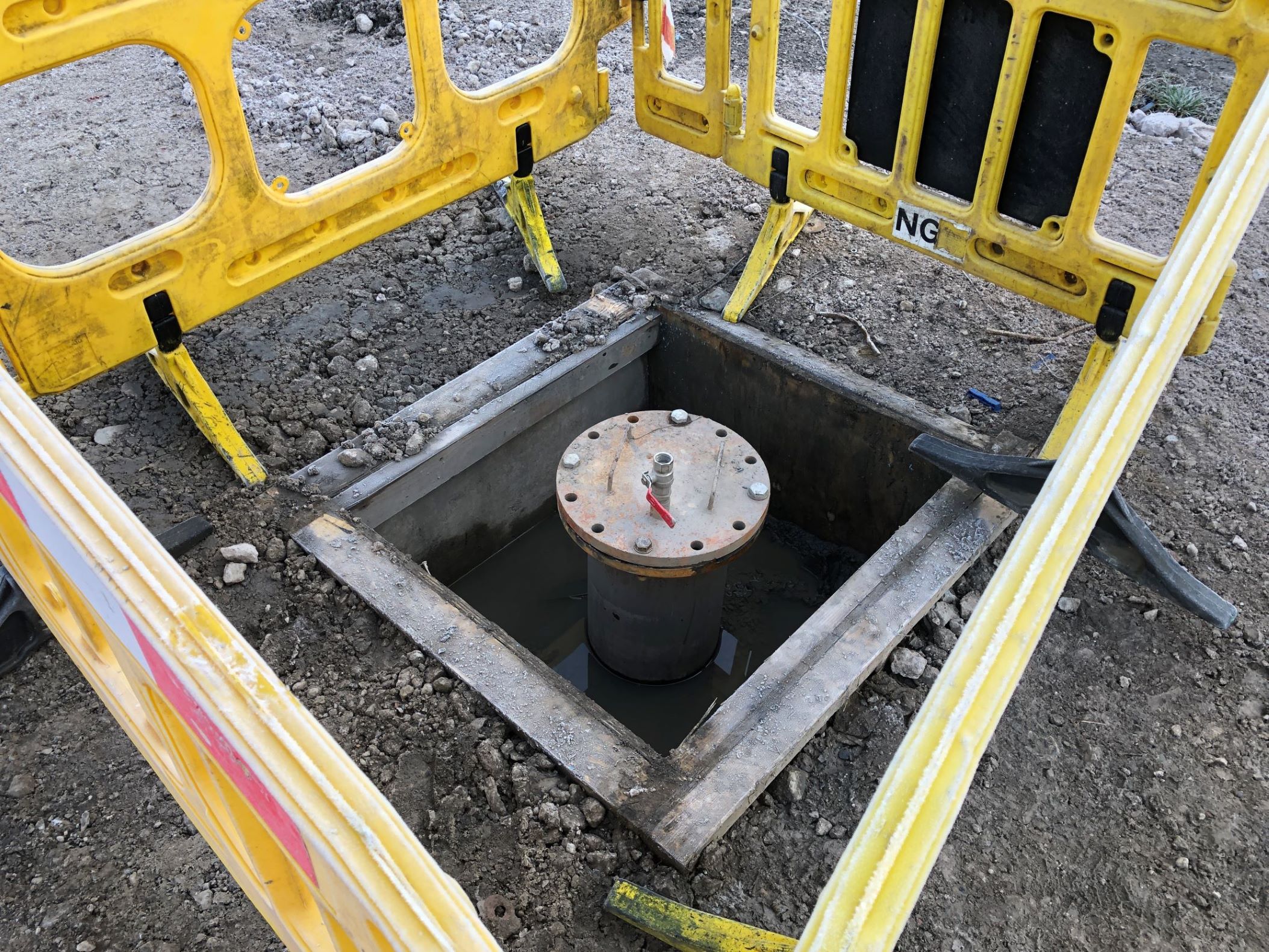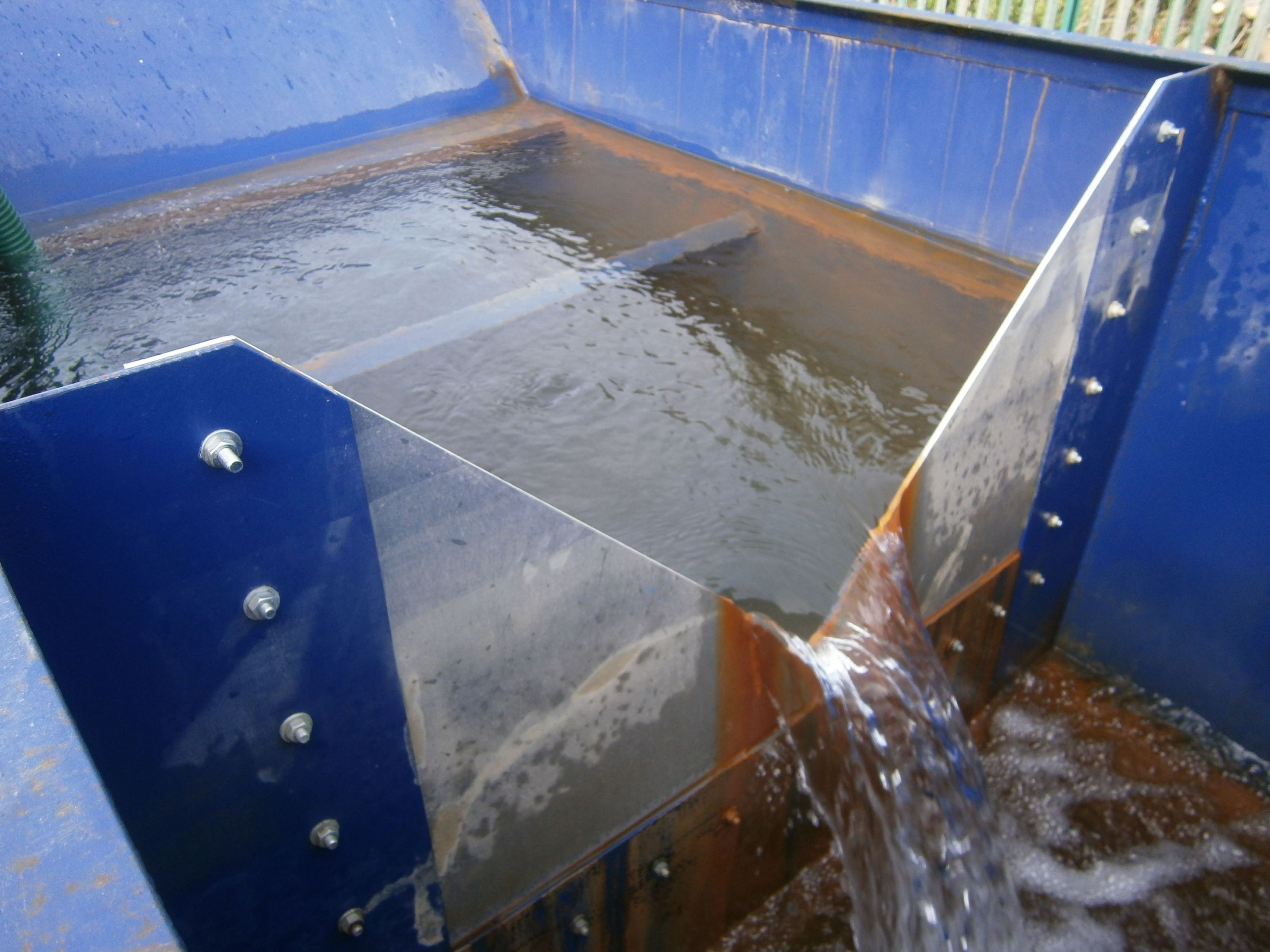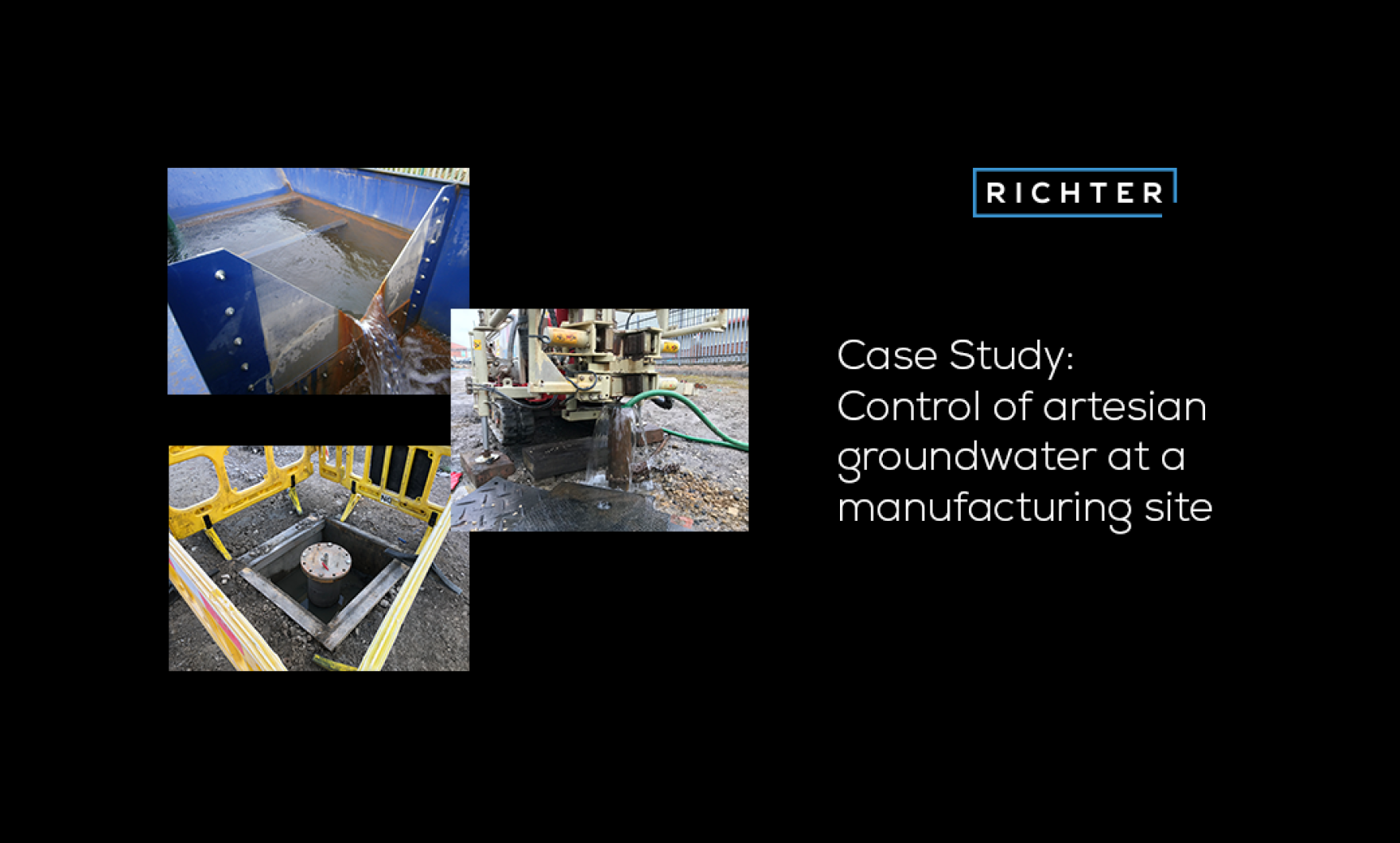Richter Successfully Controls Artesian Groundwater Conditions for major drinks Site Development in the North West
Published: 12/04/2023 12:45 - Updated: 02/05/2023 - 13:55
The Site was that of a major drinks producer based in the North West. During site development work, Richter provided its services to design a solution to control the artesian groundwater conditions below the site, with groundwater levels up to 11m above ground level. Richter’s solution formed a key part of stabilising the site for future use.
The requirement for groundwater control derives from the site history. Sections of the site were built in the 1990s and were constructed on a platform which had been cut into a natural slope. Due to the position of the site and the years of ground movement caused by progressive slope deformation, there were problems with site operations and damage to buried services and drains.
Richter became involved in 2019 after investigation boreholes at the site revealed flowing artesian conditions (where boreholes overflow naturally without pumping). The artesian water strikes could not be correlated against the strata with any degree of consistency, but the water strikes tended to occur while drilling was above or within the Coal Measures bedrock.

borehole at a rate of approximately 2.3 l/s
One of the investigation boreholes overflowed very strongly; after 8 days the flow rate was 2.3 litres per second. This indicated that there were significant groundwater quantities and high groundwater pressures which would inevitably lead to problems during the bored pile construction and required more onerous design conditions be considered for the permanent works retaining walls.
Data from observations of the overflowing boreholes was used in the design of a groundwater depressurisation system to deal both the temporary and permanent works groundwater problems. If the piezometric levels could be lowered to below ground level this would avoid temporary works problems and continuing long term pumping would allow a more efficient retaining wall design. Due to the uncertainties in ground conditions a programme of field pumping tests was essential. Initially four pumping wells were installed and tested by pumping for several days. This confirmed that a system of eight pumped wells was sufficient to achieve that required drawdown.

unpumped well and prevent
When installation and testing of the eight groundwater depressurisation wells was complete, the pumping system was fully commissioned and operated as a temporary groundwater control system which then allowed piling to commence in the summer of 2020 without any artesian problems. The ground depressurisation scheme was highly effective, and the civil engineering works were completed in December 2021.
Innovative approaches were used within this project as there was a rapid development of and implementation of a geotechnical solution to deal with the unexpected problem of artesian groundwater conditions. This secured the geotechnical stability of the site, allowing future investment for a key local employment site.

tank prior to discharge
